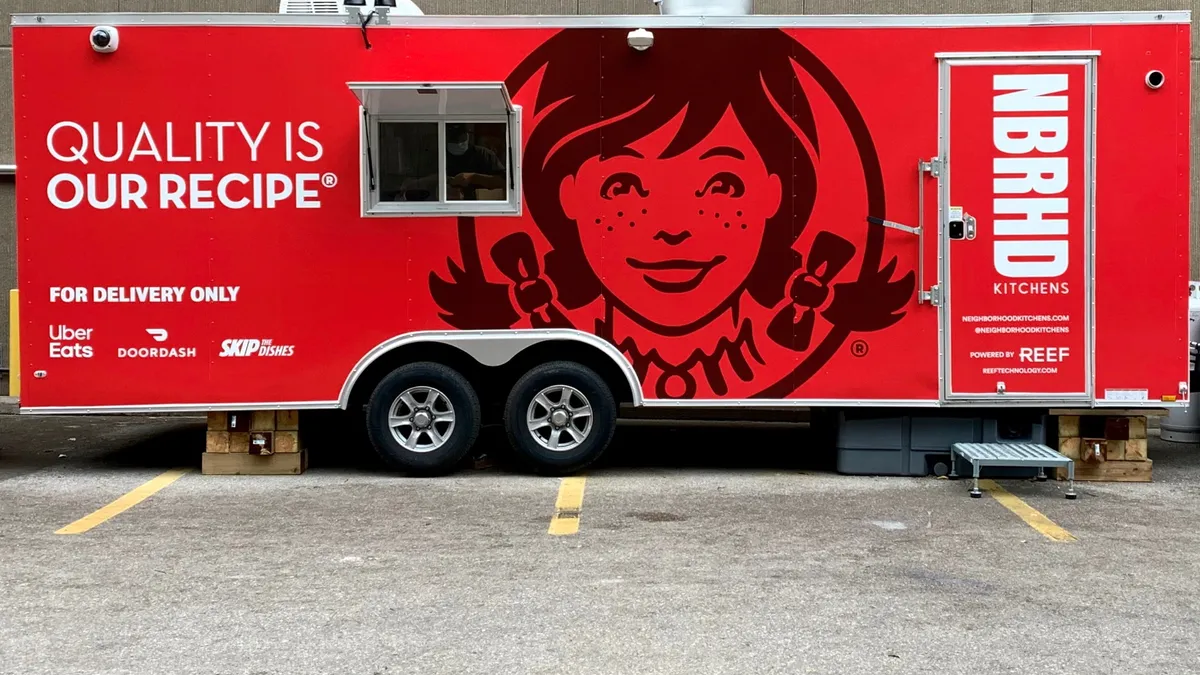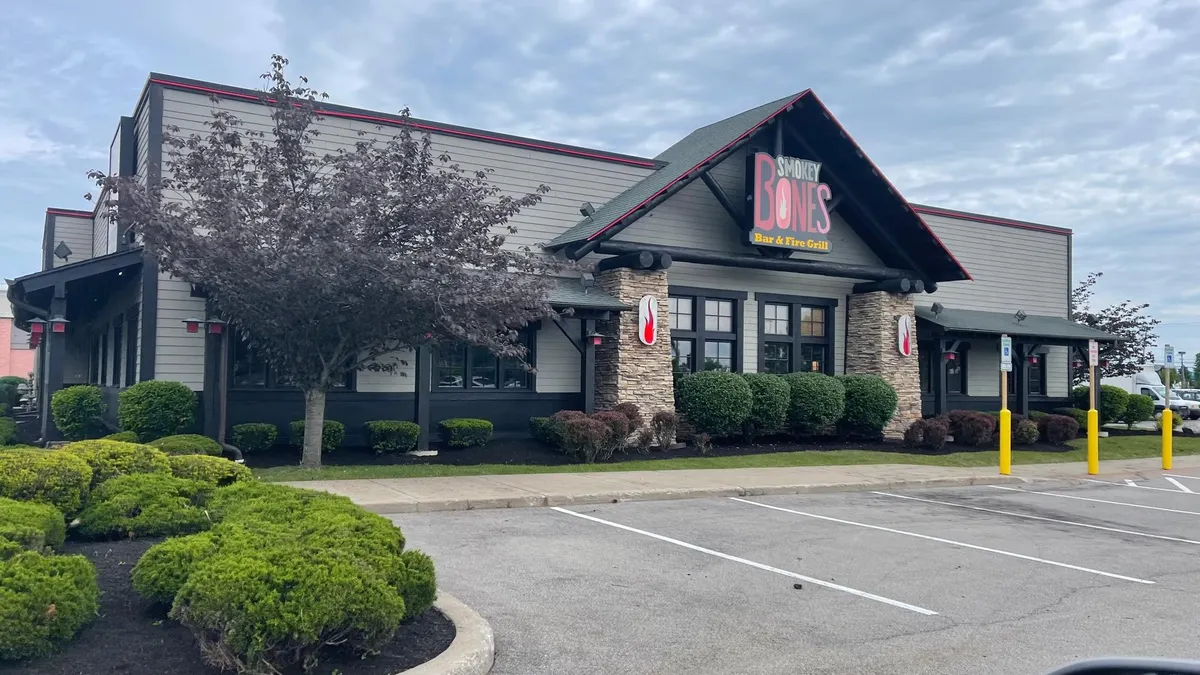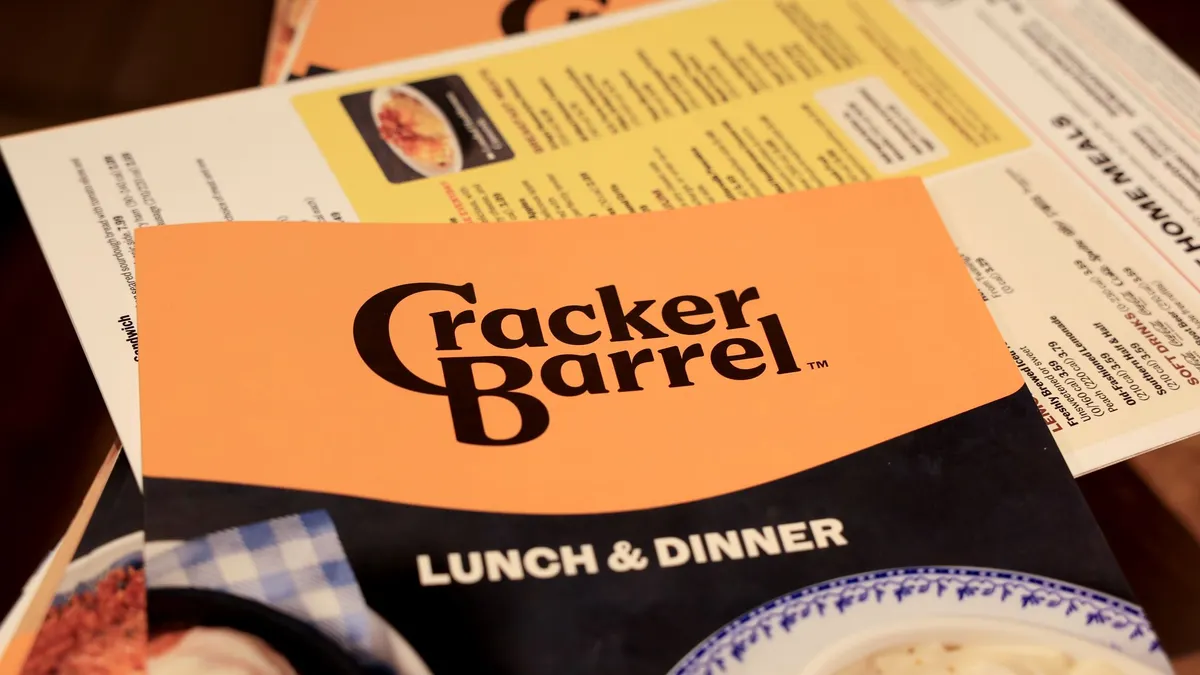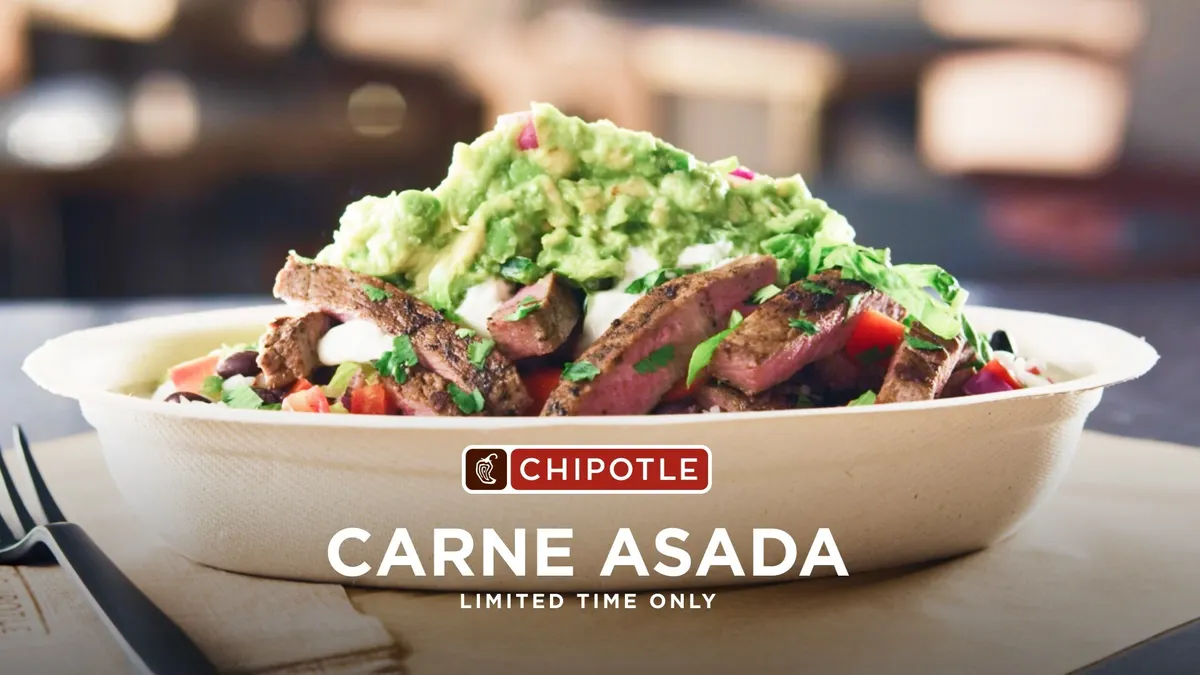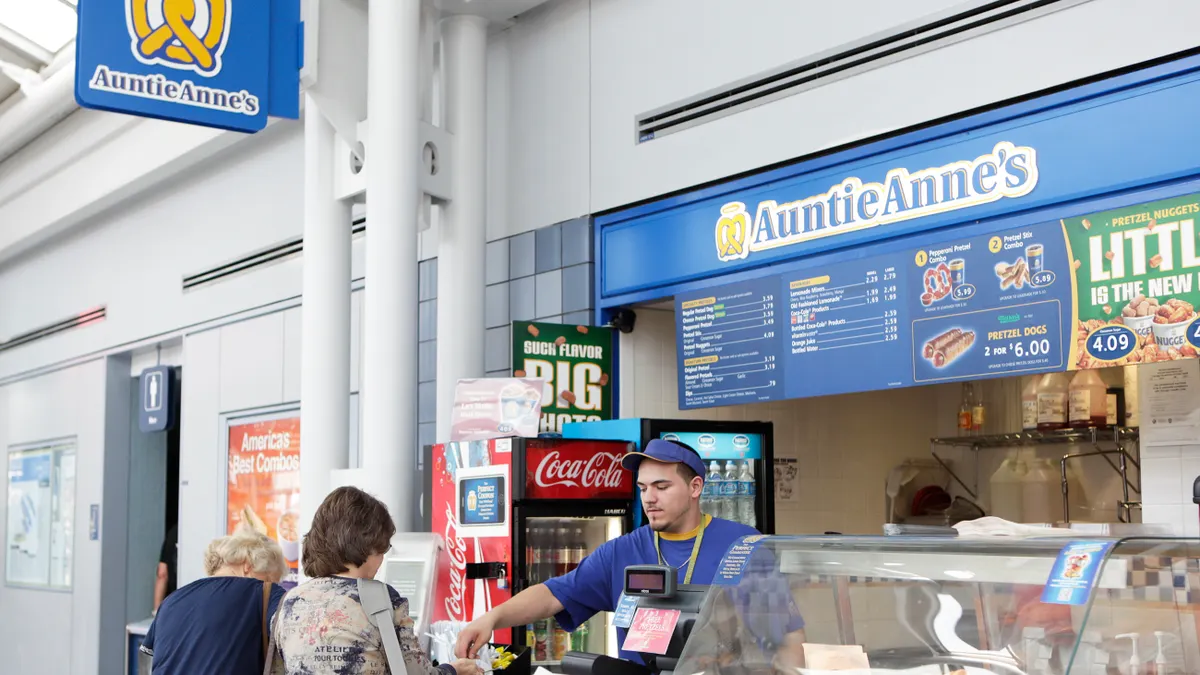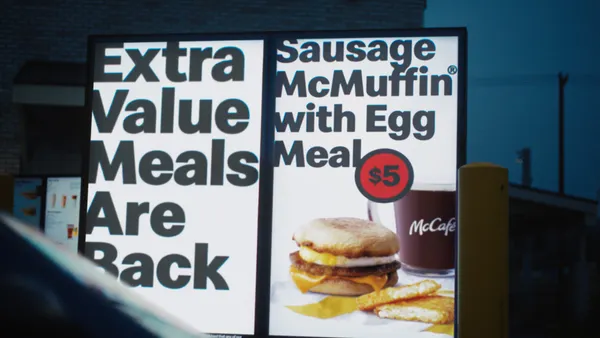As Wendy's works to expand its global footprint to 8,000 restaurants by 2025, the restaurant chain is betting on nontraditional locations to help drive growth, Wendy's Chief Development Officer Abigail Pringle said during a virtual discussion with media on Wednesday.
Thirty percent of the roughly 1,200 new locations — Wendy's currently has more than 6,800 restaurants worldwide — will be nontraditional units, Pringle said. This includes ghost kitchens, delivery-only locations, fuel and travel center locations, she said. It's even doing a Frosty cart in a Florida zoo.
"In the past I think restaurant brands, and even Wendy's, might have said a traditional four-wall, drive-thru restaurant was the only way to go, but then we would have missed out on being where customers are," she said.
Much of these design shifts will focus on customer demand for convenient, off-premise experiences, which intensified during the pandemic. Over the last year, Wendy's international digital business grew to more than 10% of total company sales, which was driven by its Canadian delivery business, CEO Todd Penegor said on a call with investors Wednesday.
The chain's U.S. digital business grew to 7.5% of sales in Q1 2021, up from roughly 6% in Q4 2020, Penegor said. He attributed this growth to increases in mobile ordering and delivery.
"I think customers are telling us that they like that convenience. And as customer behaviors change, we need to change and evolve our designs," Pringle said. "We have things like mobile ordering and curbside. We want to enhance our drive-thru experience, but also importantly, how do we enhance our delivery experience? And the driver’s need to have a convenient experience."
The restaurant joins a bevy of other QSR giants overhauling store designs to cater to post-pandemic consumer demands for off-premise experience. Taco Bell and Burger King recently unveiled mobile-focused store designs featuring double drive-thru lanes and designated curbside pickup areas.
Wendy's had been exploring ways to integrate its digital business with its physical stores prior to the coronavirus crisis. In 2017, for example, Wendy's launched its 2.0 "smart" store design, which included smaller store footprints and in-store kiosks. But shifts in diner behavior over the past year has changed the way Wendy's approaches design and expansion, Pringle said.
"[In] more recent years… we'd find where we could fit," she said. "Instead, what we've done, what's really unlocked our growth, is really saying 'What is the opportunity? And how do we design for that? Where are our customers going to be? And how do we show up in a cool and unique way?'"
Keeping pace with off-premise ordering
Wendy's is revamping design elements as minor as front counter layout and as major as building concepts to ensure that delivery drivers have a convenient experience, Pringle said.
The company began developing drive-thru-only designs before the pandemic, Pringle said, and has multiple such restaurants in its pipeline that are under construction, including in the United Kingdom. The chain also opened a drive-thru-only unit in the Philippines earlier this year where guests can collect mobile orders, she said.
The chain will evaluate the needs of customers in specific trade areas when evaluating whether a traditional restaurant format or drive-thru-only model will best serve that market, Pringle said. Still, while the company thinks that these off-premise-focused locations can drive efficiencies and expand its diner reach, it's "not going away from dining rooms," Pringle said.
Wendy's is also pursuing delivery-only locations as a way to broaden its access to customers.
"In the U.S., we only have one restaurant for every 135,000 people in some of our biggest metro cities. That's people having to give up on having Wendy's — we don't want to have that," Pringle said. "So we want to bring Wendy’s to people through the convenience of delivery, and we think these dark kitchens can help us do that."
Wendy’s already has ghost kitchen locations in the U.S., Pringle said, and partnered with Rebel Foods last year to launch delivery-only units in India. In late 2020, the restaurant also teamed with Reef Technology to launch what it calls "Neighborhood Kitchens" in Toronto, Canada. These units look like food trucks but are delivery-only kitchens on wheels that allow Wendy’s to "go into some of the biggest cities around the world where we don't have traditional restaurants," Pringle said.
New designs will improve labor, franchisee experiences
Pringle doesn't anticipate a reduction of labor through these new designs. But she thinks that new prototypes will allow the chain to re-allocate employees to maximize labor efficiencies and improve the customer experience through better throughput and improved order accuracy.
"For example, with the enhancement of mobile ordering, or with curbside, and what we do with our digital, instead of spending time on taking an order or processing payment, [an employee] can spend time with you and smile … engage with you [to make] sure your order is accurate," Pringle said.
Since 95% of Wendy's system is franchised, the company needs to ensure that it convinces operators to buy into new store designs to maximize the success of new models. The company gives its franchisees a suite of store design options ranging from container formats, modular buildings, its drive-thru-only concept and Wendy’s 2.0 design "so they feel like they can have their best chance of success," Pringle said.
Wendy's has also added incentives to its design program to get operators on board with new innovation, Pringle said. These include royalty and national marketing fee relief, and operators are rewarded for restaurant growth, for making multi-year pledges to expand operations and for converting existing real estate to Wendy's restaurants. If operators convert a store, they can receive a roughly $170,000 incentive, QSR Magazine reports. A Wendy's franchisee can gain up to $250,000 for accelerating development, and groundbreakers can make $200,000 in incentives.
"We have been seeing great interest from our franchisees that are signing up for new, multi-year, multi-unit commitments around growth. And they're excited to be able to lean in and grow with us … so this is happening in the U.S., [and] it's happening internationally," Pringle said.
Going forward, nontraditional locations will have a major part to play in Wendy’s growth journey, she said.
"We have had some nontraditional development but not at a very big pace and not in a significant, intentional way. … You'll see a lot more of us in those unique places," Pringle said.



